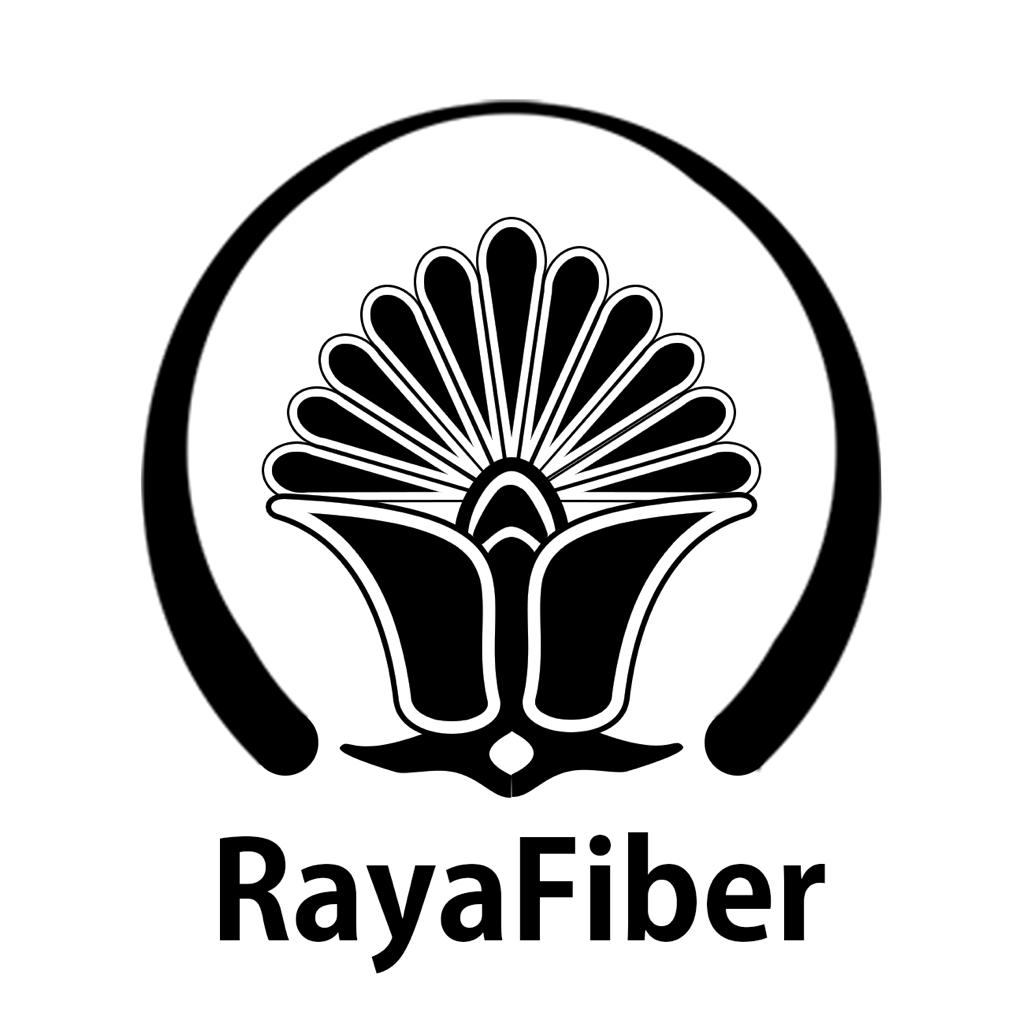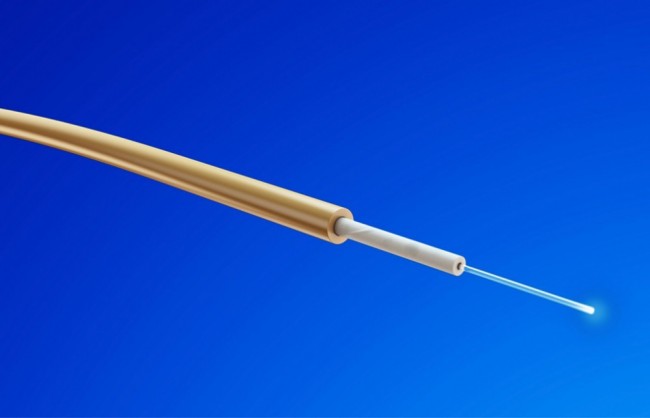
Fiber optic jargon
Due to the increasing need for high bandwidth and speed internet, the optical fiber industry is expanding every day. To better understand the fiber optic network, we need to familiarize ourselves with the common terms in this industry. In this article we will introduce these terms.
Fiber optic Definitions, Abbreviations, and Acronyms
Attenuation Coefficient The optical loss of fiber per unit length, expressed in dB/km.
Backscattering The scattering of light in a fiber back toward the source, used to make OTDR (Optical Time Domain Reflectometer) measurements.
Bandwidth The range of signal frequencies or bit rates within which a fiber optic component, link or network will operate.
Bending or Microbending Loss Loss in fiber caused by stress on the fiber bent around a restrictive radius. Most fiber optic cables are specified for a radius of 10 times the cable diameter unloaded or 20 times the cable diameter under pulling tension.
Bend-Insensitive Multimode Fiber Fiber designed and manufactured to withstand a smaller bend radius than nonbend-intensive fiber, enabling lower losses or damage.
Buffer A protective plastic coating applied directly to the optical fiber. Also called primary coating.
Cable One or more fibers enclosed in protective coverings and strength members.
Cable Plant The combination of fiber optic cable sections, connectors and splices forming the optical path between two terminal devices.
Cladding The lower refractive index optical coating over the core of the fiber that “traps” light into the core.
Cleave To precisely break an optical fiber to prepare it for splicing or termination.
Composite Cable A cable containing both optical fibers and electrical conductors.
Connector A device that provides a demountable connection between two fibers or a fiber and an active device.
Continuity Tester A visible light source used to confirm continuity and trace fibers.
Core The center of the optical fiber through which light is transmitted.
Decibel (dB) A unit of measurement of optical power that indicates relative power on a logarithmic scale. dB = 10 log (power ratio).
dBm optical power in decibels referenced to 1 milliwatt
Dispersion The spreading of a pulse in an optical waveguide that affects bandwidth. May be caused by modal or chromatic effects.
End Finish The quality of the end surface of a fiber prepared for splicing or terminated in a connector, tested by visual inspection in a microscope.
Ferrule A precision tube, which holds a fiber in alignment for interconnection or termination. A
ferrule may be part of a connector or mechanical splice.
Fiber Optics Light transmission through flexible transmissive fibers for communications or lighting.
Fiber To The Home (FTTH) Connecting subscribers to the network for phone, Internet or
over fiber optics.
Fresnel Reflection Light reflected from the cleaved or polished end of a fiber caused by the difference of refractive indices of air and glass. Also called Reflectance, Back Reflection or Optical Return Loss.
Fusion Splice A permanent joint between two fibers created by heating the fibers and fusing the joint.
Fusion Splicer A precision instrument that joins two fibers together by melting and fusing them.
Graded Index Fiber A type of multimode fiber, which uses a graded profile of refractive index in the core material to correct for modal dispersion.
Hybrid Cable An optical cable containing both single-mode and multimode fibers.
Index Matching Fluid or Gel A fluid or gel with a refractive index similar to the fiber used to match the materials at the ends of two fibers to reduce loss and back reflection.
Insertion Loss The loss caused by the insertion of a component such as a splice or connector in an optical fiber. Also refers to the loss of a cable or cable plant when tested with an optical loss test set.
Jacket The protective outer layer of the cable.
Lambda-l Greek letter used as a symbol for wavelength.
Launch Cable A high quality fiber optic reference jumper cable used for loss testing, attached to a source and calibrated for output power.
Link, Fiber Optic A combination of transmitter, receiver and fiber optic cable capable of transmitting data.
Loss Budget The estimated amount of power lost in the link.
Loss Margin The additional amount of loss that can be tolerated in a link. The difference between the maximum loss the networking equipment is designed for and the actual loss of the link.
Mechanical Splice A joint between two fibers made with a mechanical alignment device that
usually contains index matching gel or adhesive.
Microscope, Fiber Optic Inspection A microscope used to inspect the end surface of a connector for flaws or contamination or the end of a fiber for cleave quality.
Multimode Fiber A fiber with core diameter much larger than the wavelength of light transmitted. It allows many modes (rays) of light to propagate.
OLTS optical loss test set
Optical Fiber An optical waveguide comprised of a light carrying core, surrounding cladding which traps light in the core and the primary coating.
Optical LAN (OLAN) LAN architecture based on FTTH systems.
Optical Loss The amount of optical power lost as light is transmitted through fiber, splices, couplers, etc.
Optical Loss Test Set (OLTS) Tester comprised of fiber optic power meter and test source used to test the loss of components or cable plants. It is also referred to as LSPM for light source and power meter.
OTDR optical time domain reflectometer
Optical Power The amount of radiant energy per unit time, expressed in linear units or watts or on a logarithmic scale in dB (where dB=10 log (power/1 mW), 0 dBm = 1 mw).
Optical Time Domain Reflect-o-meter (OTDR) An instrument that uses back scattered light to
find faults in optical fiber and to infer loss for.
Overfilled Launch A condition for launching light into the fiber where the incoming light has a spot size and NA larger than acceptance cone of the fiber, thereby filling all modes in the fiber.
Passive Optical LAN (POL) A LAN based on FTTH passive optical network (PON) systems.
Pigtail A short length of fiber attached to a fiber optic component such as a connector, laser or coupler. Pigtails with connectors can be spliced onto cables as an alternative to direct termination.
Power Budget For network equipment, the difference (in dB) between the transmitted optical
power (in dBm) and the receiver sensitivity (in dBm), used to determine the amount of cable plant loss that can be tolerated by the equipment.
Power Meter, Fiber Optic An instrument that measures optical power emanating from the end of a fiber.
Receive Cable A high quality fiber optic reference jumper cable, attached to a power meter used for loss testing.
Reference Test Cable A short single fiber jumper cable with connectors on both ends used for testing. The fiber and connectors must match the cables to be tested.
Single-mode Fiber A fiber with a small core, only a few times the wavelength of light transmitted, that only allows one mode of light to propagate.
Splice A joint or permanent connection between two fibers. See Fusion Splice and Mechanical Splice.
Step Index Fiber A multimode fiber where the core is composed of a material with the same index of refraction.
Termination Preparation of the end of a fiber to allow non-permanent joining to another fiber or an active device, sometimes called connectorization.
Test Source A laser diode or LED used to inject an optical signal into fiber for testing loss of the fiber or other components.
Visual Fiber Tracer A device that couples low power visible light from a lamp or LED to allow
tracing fibers and testing continuity.
Visual Fault Locator A device that couples high power visible light from a laser into the fiber to
allow finding breaks, stress loss, tracing and testing continuity.
Wavelength A measure of the color of light, usually expressed in nanometers (nm) or microns
(µm).
Wavelength Division Multiplexing (WDM) Transmitting signals of different wavelengths of light through a fiber simultaneously.
Working Margin The difference (in dB) between the power budget and the loss budget (i.e. the excess power margin).







CEO & Founder Haswell. Data lover, hobby chef, econometrician with strong experiences in the finance industry.